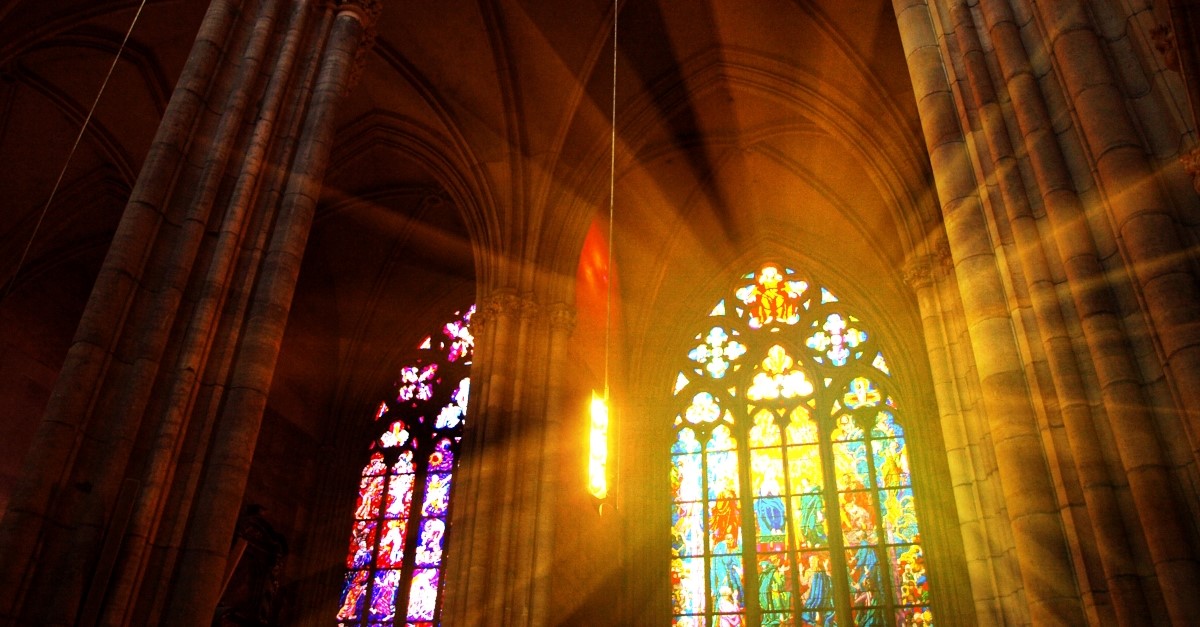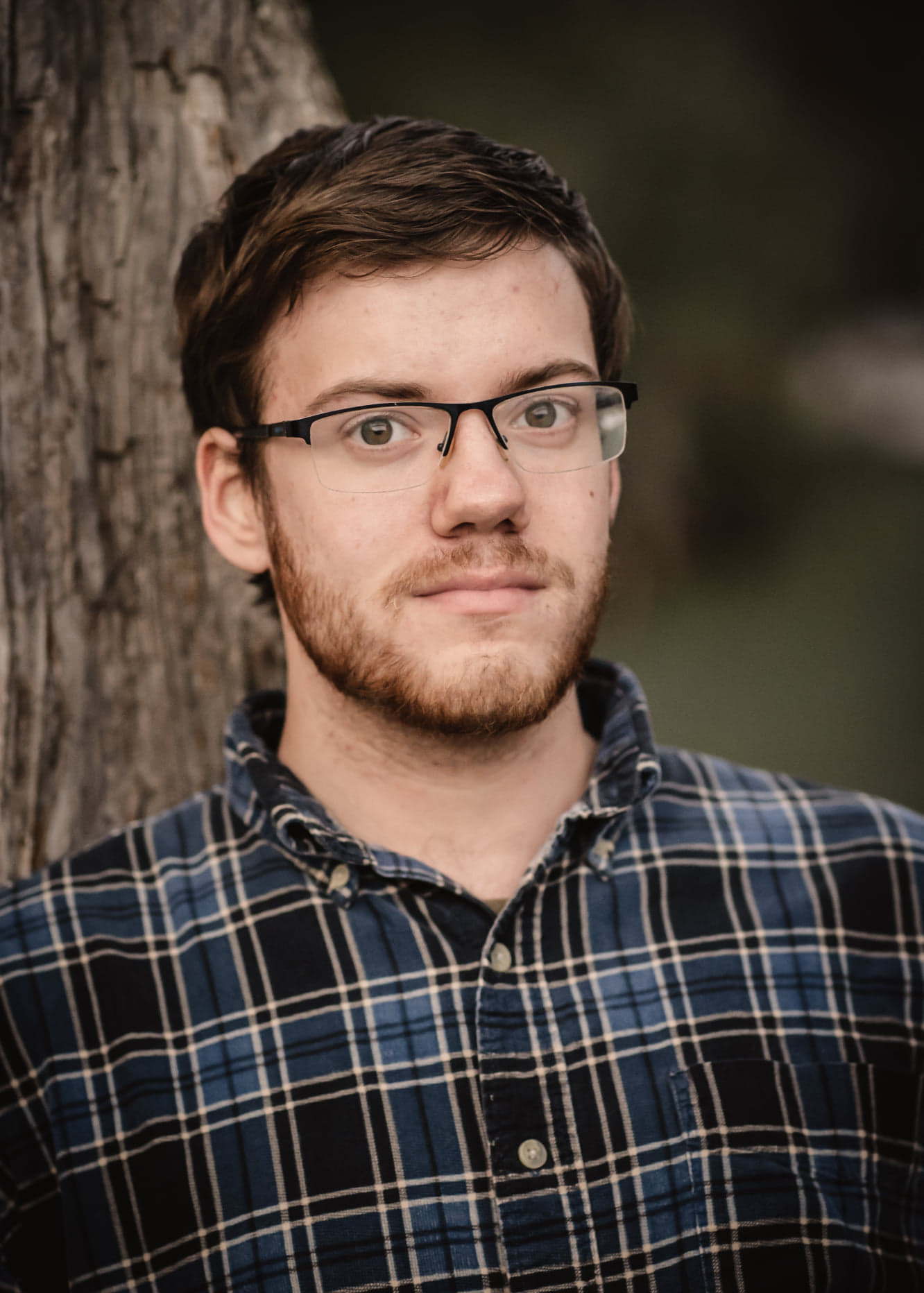50 Great Books on Christian Art

As Karen Swallow Prior observes, “a lot of Christians have uncertainty and fear surrounding the creative and artistic aspects of human nature.” There are many reasons for this fear, ranging from misunderstandings about how the Bible views creativity to church debates about when decorations become idolatry and worship loses its reverence. Fortunately, Christians don’t have to figure out the complicated question “what does God think about art?” on their own. Many intelligent Christian thinkers have considered how God views creative giftings and what it means to make Christian art. Here are 50 books on Christian art that are well worth reading.
Table of Contents
- 10 Books about Christianity and Creativity
- 10 Books about Great Christian Art
- 10 Books about Christian Artists
- 10 Contemporary Books by Christians
- 10 Classic Books by Christians

10 Great Books about Christianity and Creativity
These books describe how the Bible talks about creativity, how Christianity has regarded the arts at different periods, and how to navigate the religious pressures to make certain kinds of art.
1. The Mind of the Maker by Dorothy L. Sayers
Dorothy L. Sayers (author of classic mystery novels like Whose Body? as well as the twentieth century’s most popular Divine Comedy translation) wrote several classic books about Christianity. The Mind of the Maker helps artists understand their work by comparing art to the Trinity. An artwork involves its starting point (Idea), the making of it (Activity), and responses to it (Power). Like the Father, Son, and Holy Spirit, these three elements are each the artwork, yet distinct. Through this analogy, Sayers helps artists see how to make art well and why doing so matters. C.S. Lewis called The Mind of the Maker “the first ‘little book on religion’ I have read for a long time in which every sentence is intelligible and every page advances the argument.”
2. Art and the Bible by Francis Schaeffer
Francis Schaeffer gives a compact summary of where the Bible mentions art, from David writing the poetic psalms to Bezalel building the tabernacle. In each example, he shows how God’s attitude toward art in the Bible is much more accepting and redemptive than some Christians believe. An excellent book to read alone or alongside Schaeffer’s later book, The God Who Is There.
3. Imagine by Steve Turner
Turner gives an accessible look at how Christians have defined “Christian art” throughout history and the objections many Christians have about art today. Building on his experiences as one of Schaeffer’s students at L’Abri in the 1970s, Turners presents a vision where art can be God-honoring even if it’s not focused on “religious subjects.” Using anecdotes from his life as a music journalist who has spoken to secular and Christian musicians about art and faith, Turner shows what Christians miss when they define “art for God’s glory” too narrowly.
4. Christ and Culture by H. Richard Niebuhr
H. Richard Niebuhr presents five ways of understanding how Christians relate to culture (anything humans make and share). Christ against Culture treats all culture as irredeemable. Christ of Culture treats all culture as good. Christ above Culture treats culture as potentially good if perfected by Christianity. Christ and Culture in Paradox treats culture as something useful but always in some conflict with Christianity. Christ the Transformer of Culture treats culture as redeemable. Niebuhr considers the strengths and flaws in each view, giving artists (and other culture makers) much food for thought.
5. Culture Care by Makoto Fujimura
A Japanese-American painter whose work combines modern and traditional influences, a Christian who works in the mainstream art world, Makoto Fujimura has often found himself stuck between two worlds. In Culture Care, he argues that artists frequently find themselves in the “border-stalker” position and how this enables them to share something important with the church: culture is more a garden than a battlefield. The Christian artist’s job is to be discerning yet generous, passing on work and values that benefit their communities and carry on to new generations.
6. Adorning the Dark by Andrew Peterson
Andrew Peterson has written many acclaimed worship songs, written the acclaimed Wingfeather fantasy saga, and recently founded a film company. He describes his journey as an artist, from working at Olive Garden to becoming a full-time artist (and helper of other artists through The Rabbit Room). As he describes his journey and challenges, Peterson provides many insights (how to do the work well and make it in a community context) for living the artist’s life.
7. Scribbling in the Sand by Michael Card
Card starts his discussion of creativity by referring to the moment Jesus wrote something in the sand as the religious leaders demanded he pass sentence on a woman caught in adultery. Since the Bible never records what Jesus scribbled, the action may seem absurd, but that may be the point: it was theatrical, a little strange. It was a creative action. Card uses this moment to discuss how the Bible depicts creativity and how it is inherently an act of worship, even when it seems odd.
8. Walking on Water by Madeleine L’Engle
Madeleine L’Engle wasn’t just the bestselling author of novels like A Wrinkle in Time. She was also a Christian who believed her faith would be reflected in her work, one way or the other. However, she found this challenging: “If it’s bad art, it’s bad religion, no matter how pious the subject.” Here, she discusses different experiences that have informed her work, her conclusions, and her attempts to make good art that is also good religion.
9. Culture Making by Andy Crouch
Crouch begins his book by describing how making a cultural good (whether it’s a tasty dish, a computer, or a book) contains a risk. Culture makers make things as best they can, but the final result and how people respond are often beyond the culture maker’s control. That being said, culture is still something that Christians should make. People start creating culture the minute multiple people come together, so condemning all culture won’t work. Discussing and criticizing culture has its strengths, but it misses that the Bible depicts culture as something that can be good. Crouch argues that Christians must go beyond these popular options to embrace making culture, knowing the road won’t always be easy.
10. The Christian Imagination, edited by Leland Ryken
Leland Ryken’s book collects a series of essays from notable Christian thinkers discussing how to be a person of faith and also an imaginative writer. Writers like Wendell Berry and Jeanne Murray Walker talk about poetry. Fantasy authors like J.R.R. Tolkien and Robert Siegel talk about writing stories in imaginative worlds. Novelists like Flannery O’Connor and Walker Percy talk about using their medium well. Other contributors include Annie Dillard, Susan Wise Bauer, and Amos N. Wilder.

Photo Credit: Getty Images/kavunchik
10 Great Books about Great Christian Art
Learning the principles that nourish Christ-centered creativity matters. However, we also learn a lot about making good Christian art by looking at the art that exists and what makes it work. The following books describe how to find good art and recommend good art made by Christians and non-Christians.
1. On Reading Well by Karen Swallow Prior
What makes a good book? Prior argues that an important feature is what the book teaches us about virtue. However, that doesn’t mean that the book will be boring. In fact, “great books teach us how (not what) to think.” Prior considers 12 books that explore different kinds of virtues and provoke readers to think about what makes for a virtuous life, from Cormac McCarthy’s The Road to Charles Dickens’ A Tale of Two Cities.
2. On Stories by C.S Lewis
While not explicitly about great religious stories, this collection does include essays that Lewis wrote about several of his friends’ works. He discusses the variety of Sayers’ work, from her play cycle, The Man Born to Be King, to her translations of The Divine Comedy. He discusses both The Hobbit and The Lord of the Rings (written by fellow Inkling J.R.R. Tolkien) and supernatural thrillers by novels by Charles Williams (sometimes called “The Odd Inkling”). Other essays look at fantasy, children’s literature, and science fiction (including a recorded conversation that Lewis had with Kingsley Amis and Brian Aldiss), giving engaging insights into how to write and read well. Overall, Lewis shows readers how to enjoy and learn from Christian and non-Christian authors.
3. Modern Art and the Death of Culture by Hans Rookmaaker
An art historian who could talk about anything from jazz music to renaissance portraits, Rookmaaker published this book in 1970 when the modern art movement was receiving a high profile. He considers what makes good art, why so much modern art seems empty, and what its contents say about its makers’ values. From there, Rookmaaker considers what Christians can do to make substantial and interesting art that honors their creator.
4. Rembrandt Is In the Wind by Russ Ramsey
Ramsey discusses nine painters who produced masterpieces, each with a complex attitude to life and faith. Some, like Edward Hopper, lived dysfunctional lives but captured the human side of their tragic subjects. Others, like Lillian Trotter, wondered whether to serve art or the ministry. Each left an engaging body of work that can teach Christians vital lessons about beauty and craft.
5. 75 Masterpieces Every Christian Should Know by Terry Glaspey
Glaspey gives readers a whirlwind tour of artwork that Christians have created throughout history across different mediums. From T.S. Eliot’s Four Quartets to J.R.R. Tolkien’s The Lord of the Rings to Larry Norman’s Only Visiting This Planet, he shows how each one engages with spiritual questions in compelling ways.
6. Walk On by Steve Stockman
U2 isn’t just one of the most successful rock bands in recent history. It’s also a band where most of its members (after the early 2000s, apparently all of its members) are Christians. Irish pastor Steve Stockman explains the unique religious pressures that U2 faced (as an Irish band formed during the Troubles), informing their interdenominational approach to faith. From their early experiences being judged by Christians for making rock music, to their later experience being accepted by Christian listeners, Stockman shows how U2 has navigated the “Christian rock” and “secular rock” labels.
7. Catching Light by Roy M. Anker
Roy M. Anker wrote several excellent books about films with compelling spiritual ideas. Catching Light is the first book, considering 13 movies featuring unexpected spiritual themes. Movies like The Deer Hunter and Chinatown look darkness straight in the face. Movies like Babette’s Feast and Tender Mercies show redemption after dark times. Movies like E.T. and Star Wars consider wonder and magic in a fantastic context. Finally, movies like Grand Canyon and Three Colors: Blue show God or at least grace reaching people in surprising ways.
8. Reading Evangelicals by Daniel Silliman
Silliman outlines the history of Christian fiction from the 1970s to today, looking at five landmark books: Love Comes Softly by Janette Oke, This Present Darkness by Frank Peretti, Left Behind by Jeffry B. Jenkins and Tim LaHaye, The Shunning by Beverly Lewis, and The Shack by William P. Young. Silliman shows how each book reflects the religious concerns of its period and may help us understand what it means to be evangelical Christians.
9. Through A Screen Darkly by Jeffrey Overstreet
Some Christians assume that only movies with a clear spiritual message serve God. Others assume that movies are best seen as evangelistic tools. Overstreet shows how both claims largely miss the mark because God is more mysterious than we realize, and the strangest films may help someone make a change. Overstreet describes the films that have influenced him, from Close Encounters of the Third Kind to Wings of Desire, and the (often unexpected) lessons he discovered about exploring spiritual ideas in films.
10. More Than Words, edited by James Calvin Schaap
The 21 essays in this book were written by members of the Chrysostom Society, describing classics that influenced them. Eugene Peterson talks about learning to be a better pastor from the religious themes (and warnings) in Fyodor Dostoevsky’s work. Emilie Griffin talks about the ambition and arrogance of John Milton. Robert Siegel talks about discovering great poets during his first year at college. Each contributor shows in some way how these books made them better writers and better Christians.

10 Great Books about Christian Artists
Sometimes the best way to learn about art is to dive into a particular artist’s life and see how they explored their faith and work over a lifetime. The following books look at the lives of Christian artists who worked in different disciplines, serving God as they learned to understand their craft.
1. Of Fiction and Faith, edited by W. Dale Brown
The late W. Dale Brown worked for decades as Calvin University’s English professor and director of its Festival of Faith and Writing. Here, he discusses the need for religious writing that has substance and quality, even if it doesn’t always sell well. He provides 12 interviews with writers who don’t fit easily in the “Christian writing” or “secular writing” camp, discussing their lives and work. Frederick Buechner talks about being an ordained Presbyterian minister who writes complicated stories about complicated saints. Doris Betts talks about writing religious ideas in novels without making everything sappy or sentimental. Robert Goldsborough talks about writing mystery novels as a Christian. Other writers include Peggy Payne, Denise Giardina, and Robert Olen Butler.
2. Conversations with American Writers, edited by W. Dale Brown
The second volume of Brown’s interviews covers his conversations with other writers who engage with religion in surprising ways. Jan Karon talks about writing novels about the small town of Mitford, which refuse to be cynical but aren’t always breezy. Philip Gully talks about the interesting tension of being a pastor who writes novels about pastors. Eleanor Taylor Bland talks about writing detective novels that speak to her experience as an African-American woman and a practicing Catholic. Other writers interviewed include Terence Faherty, Lee Smith, and Ron Hansen.
3. An Arrow Pointing to Heaven by James Bryan Smith
The songwriter behind classics like “Awesome God” and “Sometimes by Step,” Rich Mullins, died in a car accident when he was only 41 but left a legacy that continues. James Bryan Smith tells Mullins’ life as a “devotional biography,” discussing his accomplishment but arranging each chapter to focus on the passions that defined Mullins’ life. Different chapters consider such passions as Mullins’ commitment to the church (even when he found it hard to find acceptance there) or his passion for helping the disadvantaged( which led Mullins to become a music teacher on a Navajo reservation). Smith shows the complex questions Mullins explored in his art and how he became the figure many still revere decades later.
4. Hammers and Nails by Matthew Dickerson
Mark Heard never reached the fame of Rich Mullins or Larry Norman, but many would argue he’s equally important. Matthew Dickerson tells the surprising story of how Heard almost became a professional recording artist before he was 21, his time with Norman’s ill-fated Solid Rock Records, and his ultimate choice to produce his own music. Dickerson takes an honest look at the tragedy in Heard’s life (that so many Christians didn’t care for his nuanced lyrics and crafted sound) while admitting some of Heard’s struggles were bad timing. Throughout, he pushes readers to consider what “Christian music” means and how to make it well.
5. Songs from the Silent Passage, edited by Matthew Dickerson and Anne M. Doe Overstreet
A pastor-turned-novelist, the late Walter Wangerin, Jr., seemed to write everything. His early fantasy novels were based on The Canterbury Tales. His memoirs covered everything from being a pastor’s son to his journey with cancer. His historical fiction ranged from a novel about Paul to the story of St. Julian. This collection of essays, written by fellow members of the Chrysostom Society, considers the wide variety of Wangerin’s work and what made him so memorable no matter which genre he turned to.
6. Reading Buechner by Jeffrey Munroe
W. Dale Brown reports Frederick Buechner once called himself “too religious for the irreligious and too secular for the religious.” Jeffrey Munroe shows in this book how Buechner’s unusual style may have been what made him so valuable. Munroe traces Buechner’s life, from his upbringing in a secular New York family to his surprise conversion and decision to enter seminary to his post-ordination years as an unconventional religious writer. Munroe organizes his discussion around Buechner’s major writing roles: novelist, preacher, theologian, and memoirist. Each section shows how Buechner’s trademarks (his refusal to use “Christianese,” his honesty about spiritual struggles, and his insistence that saints are still human) made him hard to label but an enriching resource for everyone.
7. Silence and Beauty by Makoto Fujimura
Shūsaku Endō’s novel Silence is one of the great religious novels of the twentieth century, presenting a harrowing but powerful story of missionaries navigating persecution in 17th-century Japan. Published a few months before Martin Scorsese’s adaptation of Silence arrived in theaters, Silence and Beauty is Fujimura’s guide to the novel and his interesting relationship with it. Fujimura details the book’s cultural context, counterintuitive religious themes, and its status as a novel written by a Japanese author who didn’t fit cultural standards (something that Fujimura can relate to).
8. Subversive by Crystal Downing
There are several excellent books about Dorothy L. Sayers’ faith and writing, but some miss an important fact: her willingness to do something shocking for good. Downing highlights Sayers’ willingness to be subversive, most famously when she wrote The Man Born to Be King, which dared to tell Jesus’ story in modern dialogue. Downing considers how Sayers’ refusal to show Christianity as tame and easy to follow may make her more relevant than ever today.
9. A Light So Lovely by Sarah Arthur
Arthur’s biography of Madeleine L’Engle takes an honest look at a woman who unexpectedly found God, who wrote books that didn’t fit easily in the “secular” or “Christian” publishing categories, and who frequently got in hot water because other Christians didn’t like her willingness to embrace paradox. Using interviews with L’Engle’s friends like Luci Shaw and Philip Yancey, as well as writers she influenced like Nikki Grimes and Sara Zarr, Arthur shows how L’Engle’s complexities made her an inspiration and resource for many.
10. Tolkien and C.S. Lewis by Colin Duriez
Several excellent books are available about C.S. Lewis’ writing (including at least one about his theories on creativity). There have also been some excellent books about the larger literary group he belonged to, the Inklings. Duriez’s book focuses on his lifelong friendship with Tolkien and how they influenced each other as fellow Christians and fellow fantasy writers.

10 Great Contemporary Books by Christians
Reading about great literature is great, but no substitute for reading great literature. The following are great fiction or poetry books written by contemporary authors (either still alive or who passed away after 2010) who are religious or explore religious themes.
1. Emily’s Ghost by Denise Giardina
Giardina imagines the life of Emily Brontë, a talented novelist who must hide her talent under pseudonyms while writing masterpieces like Wuthering Heights. Emily’s life complicates further when she falls for curate William Weightman, who also attracts the attention of her sisters, Anne and Charlotte. Emily must decide how to pursue her dreams in a society designed to crush them and what to do with a love she never expected.
2. Gilead by Marilynne Robinson
Robinson’s novel follows elderly Reverend John Ames, who knows he is dying after decades of serving a small town in Iowa. Realizing that he won’t live to see his son become an adult, Ames records his life story. A son of preachers, Ames has lived in a time of racial segregation, religious debates, and family problems. Despite all these struggles, Ames shows how he learned to find God’s beauty in the small things and how to live a thankful and full-bodied Christian life.
3. The Book of the Dun Cow by Walter Wangerin, Jr.
Wangerin’s first fantasy novel may be described as halfway between the Chronicles of Narnia and The Song of Roland. Based on Chaucer’s story “The Nun’s Priest’s Tale,” it follows the rooster Chanticleer learning how to care for the farm animals he must protect. That need to protect his friends becomes serious when eggs disappear and an evil serpent, the Wyrm, appears. A surprising story that sounds like something for children but has more layers of complexity than the average storybook and gives an inspiring vision of bravery and growth.
4. How It Went By Wendell Berry
The latest in Berry’s series of stories about the small Kentucky town of Port William describes the life of farmer Andy Catlett. It begins with 11-year-old Catlett learning in 1945 that the war is finally over. Little does he know that a larger conflict (over land, over rural life) will soon threaten his town in a subtler way, a battle that he will fight into the next century. A deceptively simple story that becomes far more than a nostalgic ode to the past.
5. The Wizard’s Tide by Frederick Buechner
Also published as The Christmas Tide, this story isn’t Buechner’s best-known work but is worth discovering for a special reason. Based on his family history, the story imagines what happens to Freddy Schroeder and his siblings as their parents go through a crisis and tragedy strikes. Written as a Young Adult novel before Young Adult novels were known for handling sad topics, it’s a sad but uplifting story about reconciling the past and finding the strength to go on. Buechner wrote longer, more complex novels for adults (most famously Godric). However, this book foreshadows the new Young Adult novels by writers like John Green and Angie Thomas, who discuss sad but vital topics.
6. Freiheit! By Andrea Grosso Ciponte
This graphic novel depicts one of the less-remembered episodes in World War II history: The White Rose, a group of German students who committed to fighting the Nazi regime by writing subversive leaflets. The plot chronicles the White Rose’s actions, from writing their first leaflets in 1943 to their execution in 1943, followed by Allied forces dropping five million pamphlets quoting one of the group’s leaflets two months after their deaths. A great book to read alongside The Heart of the White Rose, which reprints some of the group’s letters.
7. Delicate Machinery Suspended by Anne M. Doe Overstreet
When many Christians think of poetry, they think of hymns or poems that make this world seem insubstantial, all the emphasis on what comes after death. Anne M. Doe Overstreet’s poems don’t fall into the easy Gnostic trap. Her poems collected in Delicate Machinery Suspended extend from summer fruit markets to girls gossiping at a bus stop, showing the craft and hints of divine design that appear in the least expected places.
8. Mary, Queen of Bees by Diane Glancy
Diane Glancy’s historical fiction novella imagines the life of a lesser-known relative of two famous religious figures. Molly Wesley’s brother John grew up to found Methodism. Her brother Charles wrote some of Western Christianity’s best-known hymns. Crippled at a young age, Molly struggles far more than her 18 siblings, never achieving their fame or even a decent standard of living. Glancy uses her story to consider the harsh realities of being a disabled woman in 18th-century England and how “it is when nothing holds together, the Lord enters the midst.”
9. Dead Time by Eleanor Taylor Bland
The first novel in Eleanor Taylor Bland’s Marti MacAlister series (probably the first mystery series featuring an African-American female detective) sets up her hero in a dramatic way. Marti MacAlister is a homicide detective in Lincoln Prairie, Illinois, with under 100,000 residents. Making it as one of the only African-American detectives in a small town is difficult enough. MacAlister’s work gets even more challenging when someone strangles a former mental patient, and the only two witnesses are small children that no one can locate. Bland tells an intense yet hopeful story about dealing with injustice on many levels and seeking justice.
10. Brisbane by Eugene Vodolazkin
Eugene Vodolazkin has stated that his Eastern Orthodox faith informs his work, though “There are no Orthodox writers. Just as there are no Orthodox hairdressers.” In Brisbane, he gives a nuanced view of a musician whose faith sustains him in subtle ways. Gleb Yanovsky took a strange path to become one of the world’s most acclaimed guitar players and now finds that his career will be cut short by Parkinson’s. As he considers what to do with his remaining time, Gleb discovers a child cancer patient who is also a music prodigy. Their stories become tied together, and while neither has an easy time, Vodolazkin presents them as fundamentally valuable human beings finding contentment even in the darkest places.

10 Classic Books by Christians that Everyone Should Read
As important as it is to find contemporary writers who are exploring faith in challenging ways, it’s also important to have some grounding in the classics. The following looks at some novels written by Christians (all who have passed away, their novels at least 50 years old) that combine great storytelling with engaging religious themes.
1. Till We Have Faces by C.S. Lewis
While Lewis’ Chronicles of Narnia or his satire The Screwtape Letters are better known, many scholars argue that Till We Have Faces is his finest fiction. Based on the Greek myth of Cupid and Psyche, the story follows Orual, whose father is the king of a small Greek city-state. When Orual’s sister Psyche is banished, Oraul looks for her and finds Psyche living in the wilderness, claiming to be married to a god who won’t show his face. Oraul tempts Psyche to betray her husband, setting off consequences she doesn’t expect and turning the novel into a heartwrenching meditation on regret, deception, and even finding mercy at the end of that dark road.
2. A Wrinkle in Time by Madeleine L’Engle
L’Engle observes in Walking on Water that she was concerned while writing this book that it would be heretical but found after showing it to others that it was more orthodox than she imagined. Meg Murray is a brilliant but struggling student whose parents are both scientists, but her father has disappeared while working on a government project. Meg and her brother Charles Wallace befriend another student at Meg’s school, Calvin O’Keefe, shortly before meeting surprising new friends: Mrs. Whatsit, Mrs. Who, and Mrs. Which. The three women show the children how to use a mathematical concept called the tesseract to travel through space, so they can find Meg and Charles’ father before dark forces claim him. The story presents the cosmic fight between good and evil in a compelling way, along with many spiritual insights into what defines evil and why goodness is more than something intellectual.
3. The Brothers Karamazov by Fyodor Dostoevsky
Dostoevsky wrote many works that depicted faith in surprising ways. The Brothers Karamazov is perhaps his most famous work to deal with religious questions—not the least due to its famous chapter where one character imagines an Inquisitor interrogating Jesus for being too loving. Dmitri, Ivan, and Alexei are all sons of the same man but with very different views of their father and of what matters. Their conversations and interactions present mature discussions about free will, God’s existence, and the problem of evil.
4. Silence by Shūsaku Endō
While Fujimura notes that this novel’s ending gets undercut in some editions that leave out the final appendix, Silence is a novel well worth reading in any form. Like Graham Greene’s The Power and the Glory, it’s a tale of Christians suffering persecution where the result is unexpected but enriching counterintuitively. Set in the seventeenth century, the story begins with Jesuit priest Sebastião Rodrigues hearing reports that his mentor has denied Christ while working as a missionary in Japan. Rodrigues goes to Japan, knowing full well that authorities are killing any Christians they can find. Rodriques’ journey brings him face to face with difficult questions about faith, service, and what it means to serve God when any outward sign of faith is forbidden.
5. The Divine Comedy by Dante
Whichever translation you read, Dante’s three-volume Divine Comedy is an enriching combination of storytelling and theology. The story follows Dante on a journey through the otherworldly realms (Hell, Purgatory, and Heaven), meeting famous figures and pondering what makes someone damned or saved.
6. The Man Born to Be King by Dorothy L. Sayers
A collection of twelve plays about the life of Christ, Sayers’ The Man Born to be King can be compared to Eugene Peterson’s The Message. In both cases, the author puts the story in modern language, pushing readers to get past the familiar church clichés and consider what the story is saying. Sayers shows Jesus as a charismatic but frequently shocking man who dared to say God even loved prostitutes and criminals. Jesus’ enemies are shown as people who crave the status quo and position, unaware that God will use even Jesus’ horrific death to accomplish something spectacular.
7. The Complete Short Stories of Flannery O’Connor
O’Connor’s stories are often dark but always permeated with surprising spiritual themes. Grace comes in shocking ways. Characters who think they understand the world find out how much they still need to grow. Seemingly foolish characters may know more than one expects. The short stories are generally the best place to start with O’Connor before tackling her novels Wise Blood and The Violent Bear It Away.
8. Hinds Feet on High Places by Hannah Hurnard
Hannah Hurnard’s novel Hinds Feet on High Places is an allegory in the style of John Bunyan’s Pilgrim’s Progress, presenting a simple but crafted story about spiritual growth. The hero, a woman named Much-Afraid, feels unwanted. When she meets the Good Shepherd, she leans he can make her whole, but only if she swallows the distasteful-looking seed of love and proceeds on the journey all the Good Shepherd’s followers take. Much-Afraid’s journey to the High Places is filled with trials that force her to grow, but the finish will bring the peace she craves.
9. One Day in the Life of Ivan Denisovich by Aleksandr Solzhenitsyn
A political dissident who spent years in Siberia for defying the Soviet Union, Solzhenitsyn wrote several excellent books. One Day in the Life of Ivan Denisovich is one of his shorter works and a better entry than the denser classics like The Gulag Archipelago. The novel, one of the first accounts of Stalin’s labor camps, follows inmate Ivan Denisovich Shukhov as he goes about a typical day. Interactions with other inmates present interesting conversations about what it takes to survive against constant brutality. The answers aren’t easily won, but the story presents a candid look at how faith can help people endure the worst and gives a searing critique of dictatorships.
10. Pride and Prejudice by Jane Austen
Austen’s faith is an under-discussed part of her legacy, which informed her novels in many ways. Pride and Prejudice may initially seem like it’s making fun of the church through Mr. Collins, but there may be more than meets the eye. Regardless of how the story portrays pastors, the story of Elizabeth Bennet and Fitzwilliam Darcy presents a compelling vision of realizing one’s misconceptions, admitting mistakes, and finding reconciliation.
For a great look at other classic novels that every Christian should read, check out the new B&H Books series of classic books (including The Scarlet Letter, Sense & Sensibility, and Tess of the D’Ubervilles) with introductions by Karen Swallow Prior.
If you enjoyed this article, you might enjoy these resources about Christian art:
Evangelical Tracts and Real Art
Inspire People through High-Quality Art
Arvo Pärt’s Passio: Art and Faith Intertwined
Cover Photo Credit: Getty Images/seb_ra


Originally published November 23, 2022.







